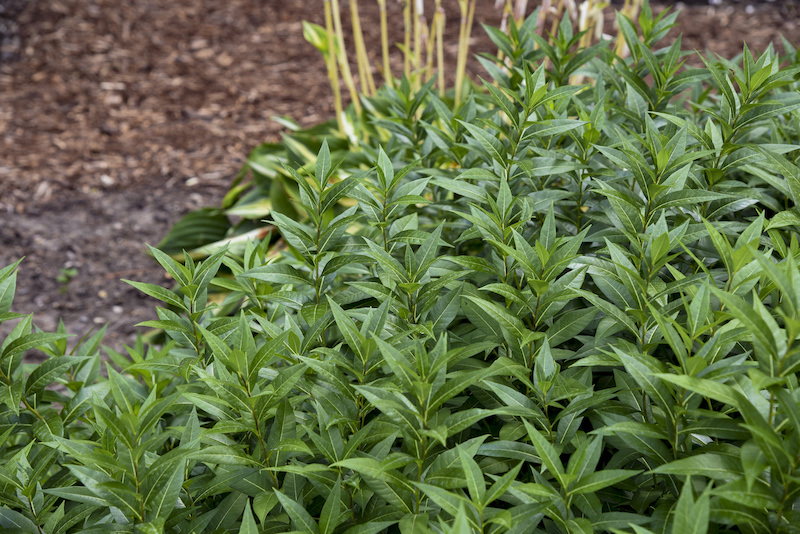Fertilizing perennials is typically an annual task that sets up the plants for the new growing season. Early spring fertilizing with a slow-release formulation will support healthy growth and flowering for the entire season. Native perennials are less “hungry” for nutrients to sustain long-term flowering and will benefit from an annual application of mulch, such as compost or shredded leaves. Amsonia is one of these less-hungry plants that does not require high levels of nutrients to thrive.

How to Fertilize Amsonia
Amsonia grows happily in a wide variety of soil types and pH levels. It does not require any specialized fertilizer products. An annual feeding with a slow-release formula will gently deliver the nutrients throughout the growing season. Apply the granular feed to the soil a few inches from the base of the plant. Amounts differ according to the manufacturer, so be sure to follow the label directions closely. Scratch the fertilizer into the top 1-2 inches of the soil, and give the plant a long watering to wash in the nutrients.
Best Time To Fertilize Amsonia
Annual fertilizing in the early spring prepares the plant for strong growth. At this time, you can also add a layer of organic compost around the root zone. The compost will help to keep the root zone cool and will slowly decompose into the soil, enriching it over time.
Best Fertilizer For Amsonia
Organic slow-release fertilizers are the best to use for native plants and low feeders. Espoma Plant-tone is an all-purpose mix that has an NPK ratio of 5-3-3. Similar formulations will provide a gentle boost in nutrition without encouraging excess foliage and floppy stems that need staking.
Amsonia Fertilizing Tips
- Fertilize in early spring to support healthy growth during the growing season
- Use a balanced, slow-release formulation
- Look for fertilizers that have an NPK ratio similar to 5-3-3
- Overfertilizing encourages lanky stem growth that requires staking
Warnings
-Always wear protective gloves and a face mask when handling chemical fertilizers.
-Closely follow all directions and storage guidelines that are on the fertilizer label.
 |
Author Robbin Small - Published 6-06-2023 |
